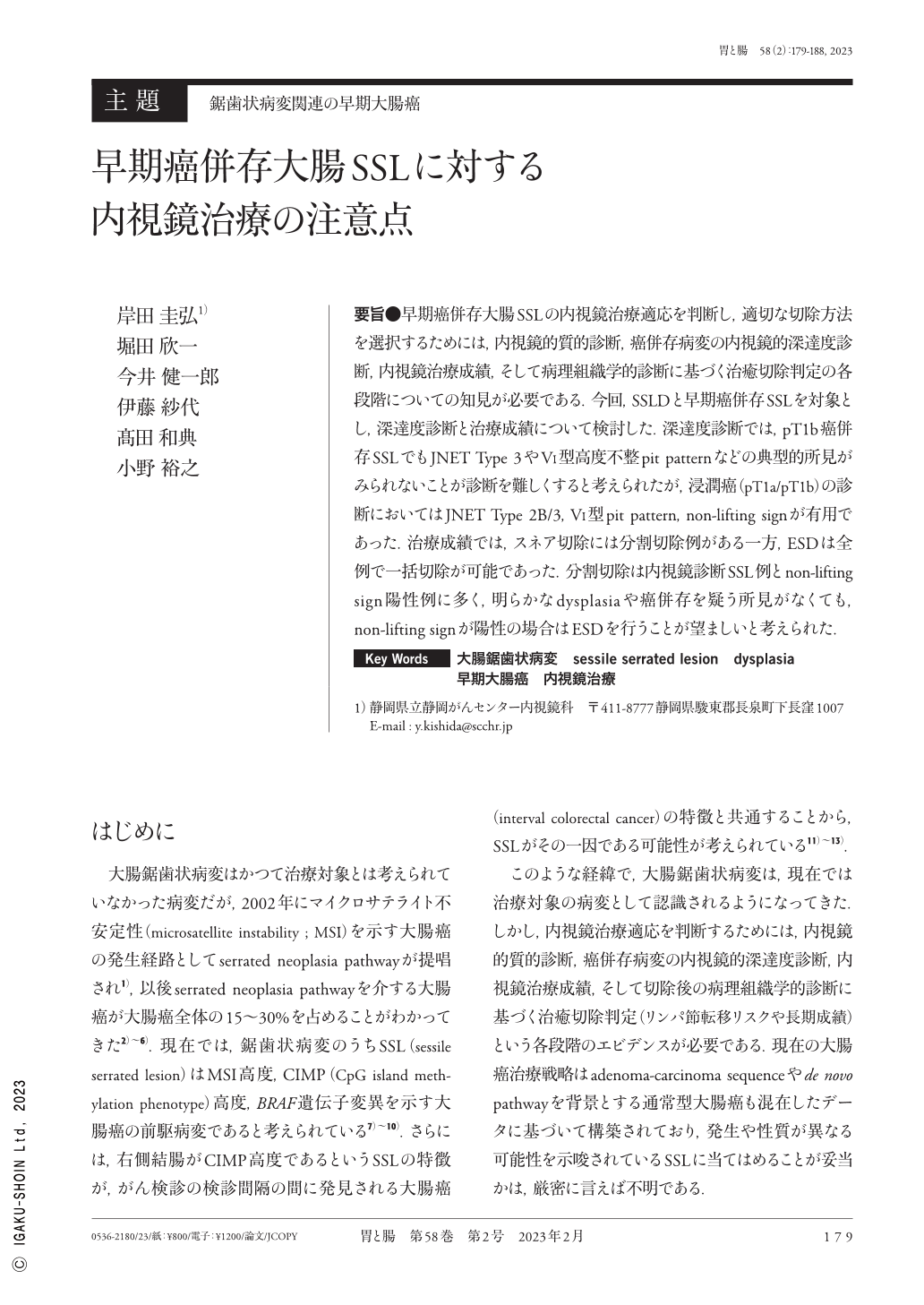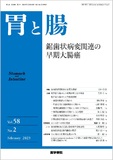Japanese
English
- 有料閲覧
- Abstract 文献概要
- 1ページ目 Look Inside
- 参考文献 Reference
要旨●早期癌併存大腸SSLの内視鏡治療適応を判断し,適切な切除方法を選択するためには,内視鏡的質的診断,癌併存病変の内視鏡的深達度診断,内視鏡治療成績,そして病理組織学的診断に基づく治癒切除判定の各段階についての知見が必要である.今回,SSLDと早期癌併存SSLを対象とし,深達度診断と治療成績について検討した.深達度診断では,pT1b癌併存SSLでもJNET Type 3やVI型高度不整pit patternなどの典型的所見がみられないことが診断を難しくすると考えられたが,浸潤癌(pT1a/pT1b)の診断においてはJNET Type 2B/3,VI型pit pattern,non-lifting signが有用であった.治療成績では,スネア切除には分割切除例がある一方,ESDは全例で一括切除が可能であった.分割切除は内視鏡診断SSL例とnon-lifting sign陽性例に多く,明らかなdysplasiaや癌併存を疑う所見がなくても,non-lifting signが陽性の場合はESDを行うことが望ましいと考えられた.
Evidence is needed for each step of endoscopic qualitative diagnosis, including depth of cancer, endoscopic treatment outcomes, and curative resection decision based on histopathological diagnosis, to determine the indication for the endoscopic treatment of early cancer coexisting with a colorectal SSL(sessile serrated lesion)and to select an appropriate resection method. In the present study, we investigated the endoscopic tumor depth diagnosis and treatment outcomes of SSL with coexisting dysplasia or early cancer. The absence of typical findings such as JNET(the Japan NBI Expert Team)Type 3 and Type VI pit pattern with severe irregularity in deep submucosal invasive cancer comorbid SSL was considered to make the depth diagnosis difficult. However, JNET Type 2B/3, Type VI pit pattern and non-lifting sign were useful in the diagnosis of submucosal invasive cancer(pT1). In terms of treatment outcomes, ESD(endoscopic submucosal dissection)allowed en-bloc resection in all cases, whereas snare resection resulted in piecemeal resection in some cases. Since piecemeal resection was more common in clinically diagnosed SSL cases and non-lifting sign-positive cases, ESD would be recommended when the non-lifting sign was positive, even if there were no suspicious findings dysplasia or cancer coexistence.

Copyright © 2023, Igaku-Shoin Ltd. All rights reserved.


